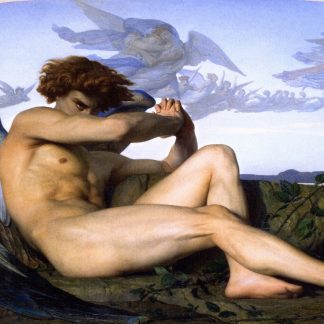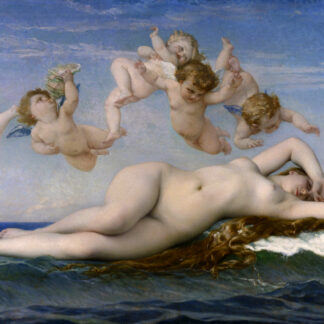Birth of Venus
From $34.44
Product Options:
Giclee Print – Paper:
Giclee print on premium archival quality Fine Art Matte paper. Certificate of Authenticity included. Shipped rolled and ready to be framed.
Giclee Print – Canvas:
Exhibition quality canvas stretched over wooden stretcher bars w/mirrored edge so none of the original image is lost. Certificate of Authenticity included. Ready to hang on your wall.
Giclee Print – Framed:
Giclee print on premium archival quality Fine Art Matte paper with selected frame, single white mat & acrylic front. Certificate of Authenticity included.
Description
At first glance, “The Birth of Venus” may appear as a traditional and conventional portrait, with its subdued tones and classical composition. Venus is depicted with a serene and sensual expression. However, upon closer inspection, the painting reveals its underlying sensuality and emotional intensity.
One interpretation of “The Birth of Venus” is that it represents Cabanel’s fascination with the female form and its expressive potential. Venus’s pose and expression convey a sense of emotional depth and complexity, inviting the viewer to imagine her inner thoughts and feelings. The cherubs and naiads add to the sense of natural beauty and wonder, creating a sense of unity between Venus and her surroundings.
Another interpretation of “The Birth of Venus” is that it reflects Cabanel’s interest in classical mythology and its enduring relevance to modern art. The mid-19th century was a time of renewed interest in the classics, as artists and intellectuals sought to reconnect with the values and ideals of ancient Greece and Rome. “The Birth of Venus” can be seen as a tribute to this tradition, as well as a celebration of the beauty and complexity of the female form.
In conclusion, “The Birth of Venus” is a stunning and evocative painting that captures the beauty and allure of the female form and its enduring relevance to modern art. The painting’s muted colors, classical composition, and emotional intensity invite multiple interpretations and readings, reflecting the richness and complexity of Cabanel’s artistic vision and legacy. “The Birth of Venus” is not only a snapshot of a specific time and place but also a tribute to the enduring power of art to inspire wonder and delight in the human soul.





